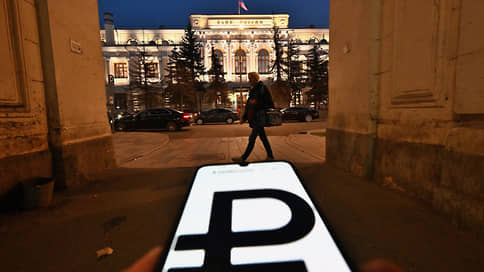depreciation of the ruble worsens the short-term prospects for the economy
[ad_1]

The ongoing weakening of the ruble could undermine economic growth in the second half of the year, reducing consumer and investment demand, according to the Center for Macroeconomic Analysis and Short-term Forecasting (CMAKP). Previously, the fact that a strong ruble is the main incentive for investment in industry was evidenced by surveys of companies conducted by the Gaidar Institute. Among the population, the traditional reaction to the weakening of the national currency was a jump in demand for imported goods.
In the July “Analysis of Macroeconomic Trends” of the CMASF, analysts of the center, analyzing the structure of the final demand components in the first quarter, note that, in addition to the historically maximum contribution of state consumption to the annual dynamics of GDP (see also “Kommersant” of July 6), more meaningful signals of the readiness of the economy to growth is an end to the decline in household consumption and a sharp increase in inventories in enterprises, which is usually a harbinger of a new business cycle. “If there are no new shocks (devaluation, for example), then household consumption may again become a significant factor in economic growth from the middle of the year. We note that the weakening of the ruble (rising prices for imports) and the increase in the key rate of the Central Bank may reverse the emerging upward trend,” analysts believe.
These warnings regarding investment activity are confirmed by surveys of industrial companies conducted by the Gaidar Institute back in April (see Kommersant of June 5). The main demand for the strengthening of the ruble is presented by the industry in connection with the cost of production – this was stated by representatives of 71% of enterprises. A strong ruble is able to stimulate the growth of purchases of machinery and equipment from 60% of domestic factories, only 4% of manufacturers link the growth of capital investments with the weakening of the ruble.
Recall that in the first five months of the year, consumer consumption grew significantly against the backdrop of income stabilization, lower inflation, an increase in retail lending and the realization of pent-up demand. The demand for investment has grown just as noticeably. According to the CMASF, the investment activity index (supply of investment goods in the economy) recovered to the pre-crisis level of 2021 by March, and in April-May 2023 rose to new historical highs. A significant part of the investment demand, apparently, was created by the state. According to the center’s analysts, in the first quarter, the gross profit in the economy, following the exhaustion of the effect from the jump in world prices in annual terms, went into a deep minus, and the shortage of personnel led to an increase in wages (see chart). “To deny the effect of transferring part of the national income from profit (taking into account the increased risks in investing it) into wages, apparently, is also wrong. And this may become a factor holding back the dynamics of private investment in the future,” the authors of the report note.
Meanwhile, the population seems to have already switched to increased consumption against the backdrop of a rapidly weakening ruble. According to Sberindex, in annual terms, its spending on goods and services increased by 9.9% from July 10 to 16 in nominal terms against growth of 10.5% and 6.1% in the previous two weeks. “Adjusted for inflation, real spending, according to our estimates, could jump by 2-3% by June with the elimination of seasonality. We associate this surge, most noticeable in non-sales, solely with the destabilization of the situation in the foreign exchange market,” analysts of the MMI Telegram channel say.
[ad_2]
Source link






